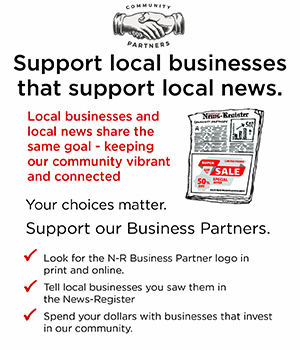Goodhild & Verma: E-commerce depends on vast, intricate supply chain::1
It’s incredibly convenient to buy something online, right from your computer or phone. Whether it’s a high-end telescope or a resupply of toothpaste, the goods appear right at your doorstep.
This kind of shopping is called “e-commerce,” and it’s becoming more popular each year. In the U.S., it grew from a mere 7% of retail purchases in 2012 to 19.6% in 2020, accounting for $791.7 billion in sales.
For Amazon, the biggest player, this means delivering lots of packages. In 2021, the company shipped an estimated 7.7 billion packages globally, accounting for $470 billion in sales.
If each of these packages were a 1-foot square box, and they were stacked on top of one another, the pile would be six times higher than the distance from the Earth to the Moon. Laid end to end, they would wrap around the Earth 62 times.
Back in the early 2010s, most things bought from Amazon.com were shipped using a third-party carrier like FedEx or UPS. In 2014, however, Amazon began delivering packages itself with a service called “Fulfilled by Amazon.” That’s when those signature blue delivery vans started appearing on local streets.
Since then, Amazon’s logistics arm has grown from relying entirely on other carriers to shipping 22% of all packages in the U.S. last year. This is greater than FedEx’s 19% market share and within striking distance of UPS’s 24%.
Amazon’s multichannel fulfillment service allows other websites to use its warehousing and shipping services. So your order from Etsy or eBay could also be packed and shipped by Amazon.
Amazon came to dominate online shopping by offering free two-day shipping to Amazon Prime members.
To handle that many packages, shipping companies need an extensive network of manufacturers, vehicles and warehouses that can coordinate together. This is called the supply chain, and if you’ve ever used a tracking number to follow a package, you’ve seen it in action.
People who make decisions about where to send vehicles and how to route packages are constantly trying to keep costs down while still getting packages to customers on time. The supply chain can do this very effectively, but it also has downsides.
More delivery vehicles on the road produce more greenhouse gas emissions that contribute to climate change, along with pollutants like nitrogen oxides and particulate matter that are hazardous to breathe. Traffic congestion is also a major concern in cities as delivery drivers try to find parking on busy streets.
Are there ways to balance the increasing number of deliveries while making freight safe, sustainable and fast? At the University of Washington’s Supply Chain Transportation and Logistics Center, we work with companies like Amazon and UPS and others in the shipping, transportation and real estate sectors to answer questions like this. Here are some solutions for what we and our colleagues call the “last mile” — the last leg of a package’s long journey to your doorstep.
n Electrification: Transitioning from gasoline and diesel vehicles to fleets of electric or other zero-emission vehicles reduces pollution from delivery trucks. Tax credits and local policies, such as creating so-called green loading zones and zero-emission zones for clean vehicles, create incentives for companies to make the switch.
n Common carrier lockers: Buildings can install lockers at central locations, such as busy transit stops, so that drivers can drop off packages without going all the way to your doorstep. When you’re ready to pick up your items, you just stop by at a time that’s convenient for you. This reduces both delivery truck mileage and the risk of packages being stolen off of porches.
n Cargo bicycles: Companies can take the delivery truck out of the equation and use electric cargo bicycles to drop off smaller packages. In addition to being zero-emission, cargo bicycles are relatively inexpensive and easy to park, and they provide a healthier alternative for delivery workers.
Package delivery can be both convenient and sustainable if companies keep evolving their supply chains, and everyone thinks about how they want delivery to work in their neighborhoods.
From The Conversation, an online repository of lay versions of academic research findings found at https://theconversation.com/us. Used with permission.












Comments